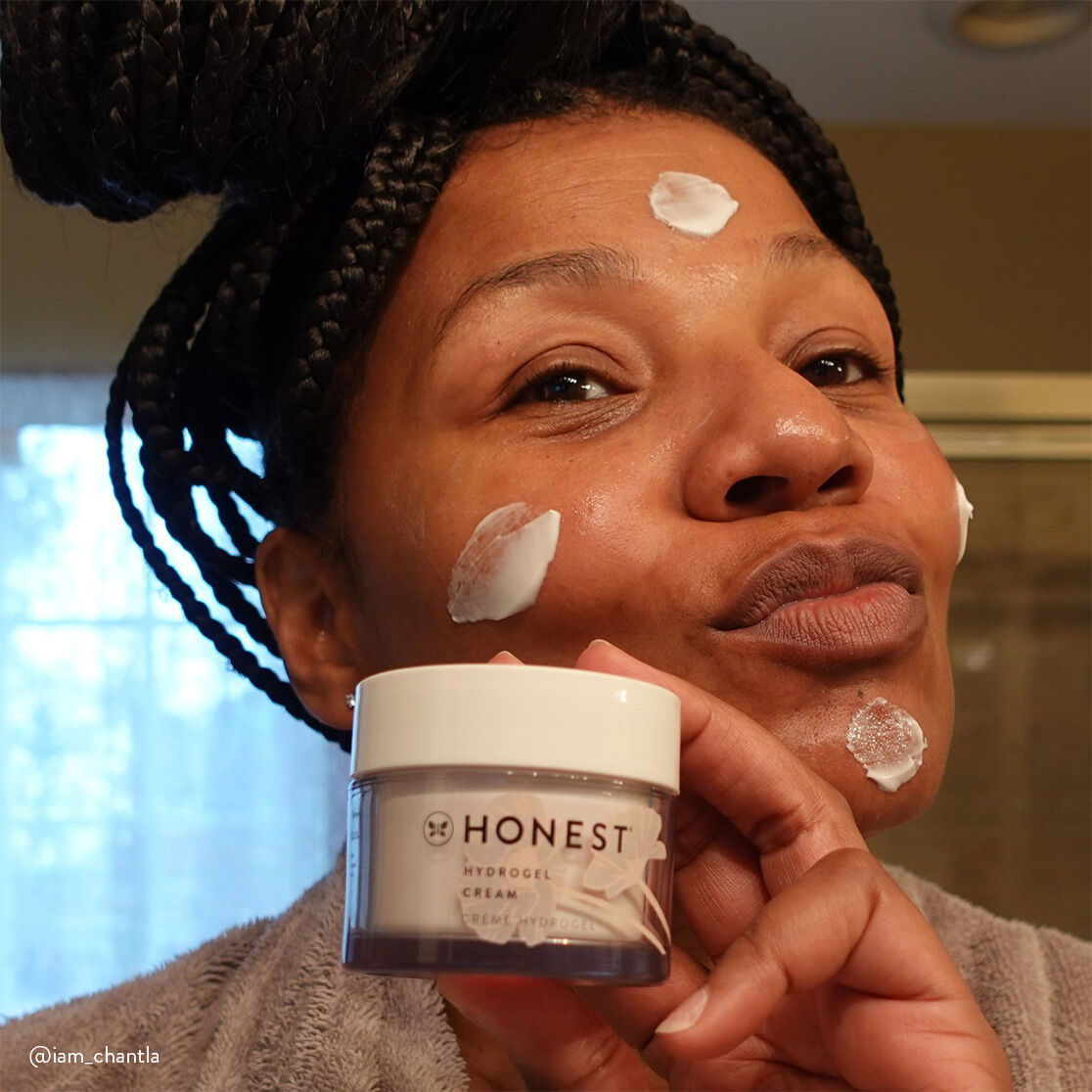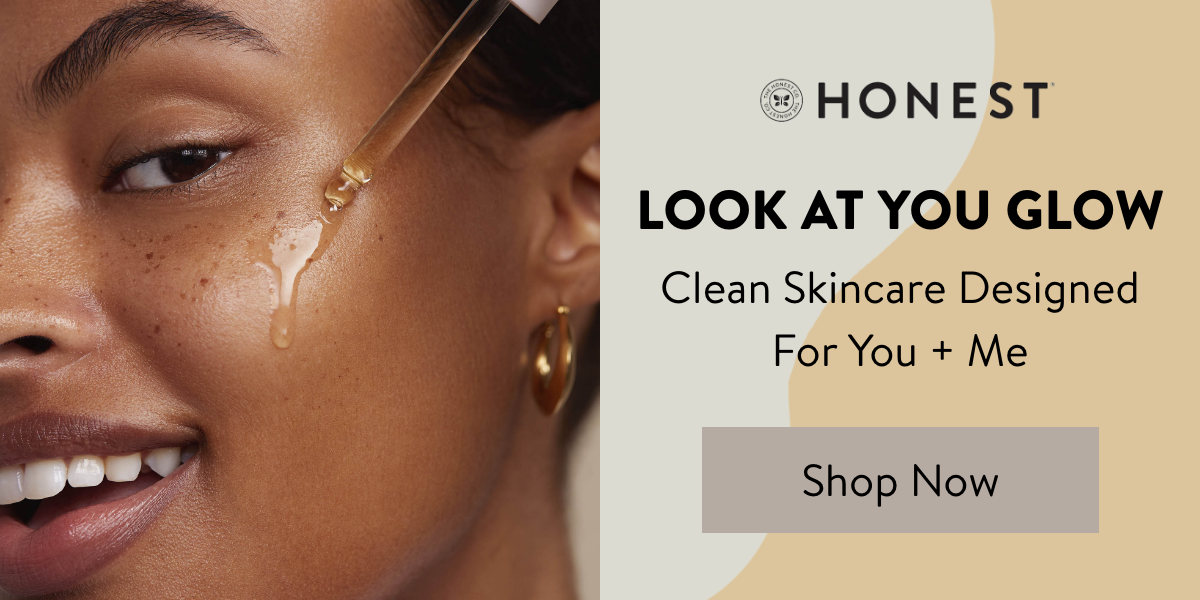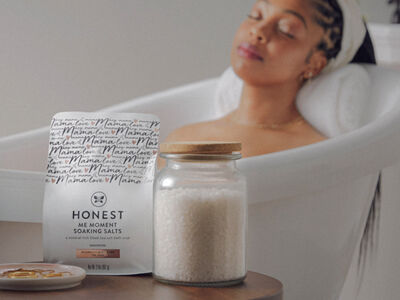Image shared by @iam_chantla
Everyone has a predominant skin type. Once you’ve learned just how to determine your skin type, you might find skin is affected by environmental factors, like weather changes and elevation, or internal factors, like hormonal shifts and the natural progression of age. Whether you have dry skin, oily skin, or a combo of the two, finding the correct order of face products in which to use for your skin concern or type is essential if you want to achieve healthy-looking skin. It’s imperative to choose the right skin care product for your skin type and establish a glowing skincare routine to help keep your skin healthy-looking, firm, and supple.
What is Combination Skin?
A combination skin type is the combo of the two main skin types, oily skin, and dry skin. Combination skin is typically characterized as skin that has an oily area on the nose, chin, and forehead—otherwise known as the T zone—but the skin is dry elsewhere, like the cheeks and along the jaw.
When your skin type is combination skin, it means you have to build a beauty regimen that addresses more than one skin concern at a time—finding the happy medium between an oily skin care routine and a skin routine for dry skin. Do you opt-in for skin care for dry skin or skin care for oily skin? This can make things challenging, as you may have to try more than one skin care product before you find a solution that works on both your dry patches as well as your oiliness.
What Causes Combination Skin?
There are many factors that impact skin type, but genetics plays the most prominent role in determining what kind of skin you have. However, genetics is not the only factor.
Other things can also contribute to your skin type, such as environmental toxins, physical stress, and hormone fluxes. Not to mention, if you happen to be using the wrong products for your skin type, you could be unwittingly making your problems worse.
That’s why it’s so important to experiment with different skin care products because there’s no “be all, end all” solution for those with a combination skin type. The reality is that you have two skin types on one face. Therefore you have to properly care for both skin types to maintain healthy skin that is both balanced and youthful. Whether you are shopping for a clay mask, face wash, or tinted moisturizer, make sure you opt for skincare products that are meant for combination skin types.
What are Signs of Combination Skin?
Combo skin means that even after washing your face, you might notice some greasiness in your T zone area that pops back up through the day. If you use a moisturizer, you probably feel as though you have to blot those areas with excess facial oil frequently.
You also might notice unwanted shine along the T zone and find that when you get hot, that’s the first place you start to sweat. People with combination skin can also get both patchy areas of dry skin and breakouts, especially if you aren’t using the right skincare product on the right areas.
What Products are Good for Combination Skin?
The key to an excellent skincare routine for combination skin is finding a balance between those that moisturize dry areas without making your face greasy in other areas more prone to sebum production and shine. Sometimes you have to use products for more than one skin type to adequately address your sensitive skin care routine needs because most products are formulated for either dry skin or oily skin.
Avoid products that use synthetic fragrances. Chemically produced fragrances can irritate dry skin areas, stirring up inflammation and prompting more clogged pores and breakouts.
Products labeled non-comedogenic are designed to keep pores from clogging and may be best for those with combo skin.
Anything too heavy, even if it helps your dry areas, will not be kind to the places on your face prone to excess facial oil.
What Moisturizer Is Good For Combination Skin?
Unfortunately, you might have to try more than one type of daily moisturizer to find what’s most effective. For areas like your cheeks and jawline, you might try a heavier, creamier moisturizer to give dry skin the extra hydration it thirsts for.
However, in your T zone, you’ll want to spread a moisturizer that is lightweight and water-based, so you don’t add any extra shine, but your healthy skin still stays soft and supple.
You can also try a two-pronged approach. Start with a lightweight formula over your whole face, but then add a thicker moisturizer or face serum to the areas of your face that are more vulnerable to dryness.
Just don’t skip the moisturizer altogether. Every skin type needs moisturizer; it’s just a matter of finding the right one—or two—that keeps your skin hydrated without exacerbating problem areas.
https://www.shutterstock.com/image-photo/beauty-girl-looking-mirror-while-touching-1868918950
What's the Best Skin Care Routine for Combination Skin?
There’s no one-size-fits-all solution when trying to develop the best skin care routine. Everyone is different, with unique needs. Finding the perfect combination skin routine takes some trial and error, but with commitment, you’ll find what works for your skin type.
Step 1: Gently Clean Your Face
Start every skin care regimen with cleansing. Using a gentle face cleanser is like turning your face into a blank canvas, ready to take on the world. During the night, your face has had a chance to create impurities and produce excess oil. A morning routine that starts with a gentle cleanser is so important so that you can remove those impurities and prepare your face for the next step in your curated skincare routine for combination skin.
In the evening, you can double cleanse by using an oil cleanser first to remove grime and pollutants that have collected on your skin through the day, as well as makeup and any residual sunscreen.
Then follow up with your regular facial cleanser. A foaming cleanser is a good choice, as are gel cleansers. Cream cleansers or a cleansing lotion works exceptionally well for the combination skin type. Consider trying one that’s water-soluble for optimal results.
Step 2: Gently Exfoliate Your Face
Don’t go overboard on exfoliating. A gentle exfoliator or toner for oily skin is excellent for unclogging pores and removing dead skin cells, but if you use one that’s too harsh, you will negate any positive effects and possibly trigger additional inflammation.
A regular exfoliation practice also helps increase cell turnover, helping to smooth your skin and even out your skin tone. It’s best to exfoliate in the morning and stick to just 1-3 times a week to routinely remove any dead skin cells that may be lingering.
You can also try a leave-on exfoliant with BHA as a gentler alternative to scrubs or brushes to reduce excess oil, unclog pores, and smooth skin that’s dry and flaky. Try looking for one that is a gel or water-based formula.
Step 3: Apply An Essence, Booster, And/Or Serum
Skin boosters and essences are designed to give your skin an extra boost of nourishment and hydration to help strengthen and stabilize your skin’s barrier.
Strengthening your skin’s natural barrier helps equip it to stand firm against environmental irritants and toxins.
Serums are typically designed to target something specific, such as inflammation, uneven pigmentation, and tiny lines. Plus, they really help to customize your beauty routine.
Both of these are great steps to add to your skin care regime. A retinol serum plays well with combination skin and doesn’t usually make your skin too dry or too oily but helps maintain a happy medium.
Essences are similar to serum and work to balance and hydrate your skin so that it’s ready to fully absorb the next skincare product you apply. Some essences are aimed at moisturizing, but others are also designed to exfoliate and help brighten your complexion.
Step 4: Apply An Eye Cream
The skin around your eyes is extremely delicate and vulnerable to damage. Using an under eye cream is essential in delivering nourishment and hydration to the skin. This can help reduce the signs of fine lines and aging, as well as prevent dehydration and dark, unsightly circles. You don’t have to use it a lot, and you shouldn’t rub too hard when you’re applying it, but it’s definitely a step you don’t want to skip if you want to maintain a fresh, youthful look.
Step 5: Apply A Moisturizer
Moisturizing combination skin can be tricky. You don’t want to apply anything too heavy, as that will only increase the shine in your T zone. You also want to make sure the drier areas of your skin are getting plenty of hydration.
Try a lightweight cream during the day, and at night consider applying an emollient serum or a gel moisturizer that’s chock full of antioxidants and other goodies for your skin to thrive.
Step 6: Don’t Forget The Spf
Protecting yourself from sun damage helps to slow down signs of aging.Think of it as a preventative measure. While you can’t stop aging, you can age gracefully. To protect combination skin, look for formulas that are lightweight and have a matte finish. A tinted moisturizer with SPF of at least SPF 30 or higher is perfect if you want a golden glow while still protecting your face.
Remember that finding your perfect combination skincare routine might require some experimentation at first. You may have to mix and match different products to develop the perfect concoction to manage your combination skin effectively. However, the most important thing is to establish a regular beauty routine and stick to it. You can adjust your formulas based on your skin’s current needs as you go. Our team of experts at Honest are here to help answer your questions as you navigate through the process of perfecting your skincare regimen!
We aim to provide you with the most honest and credible information possible. This article was reviewed for accuracy by The Honest Team and was written based on trusted sources that are linked at the bottom of the article.
blog_review_statement




